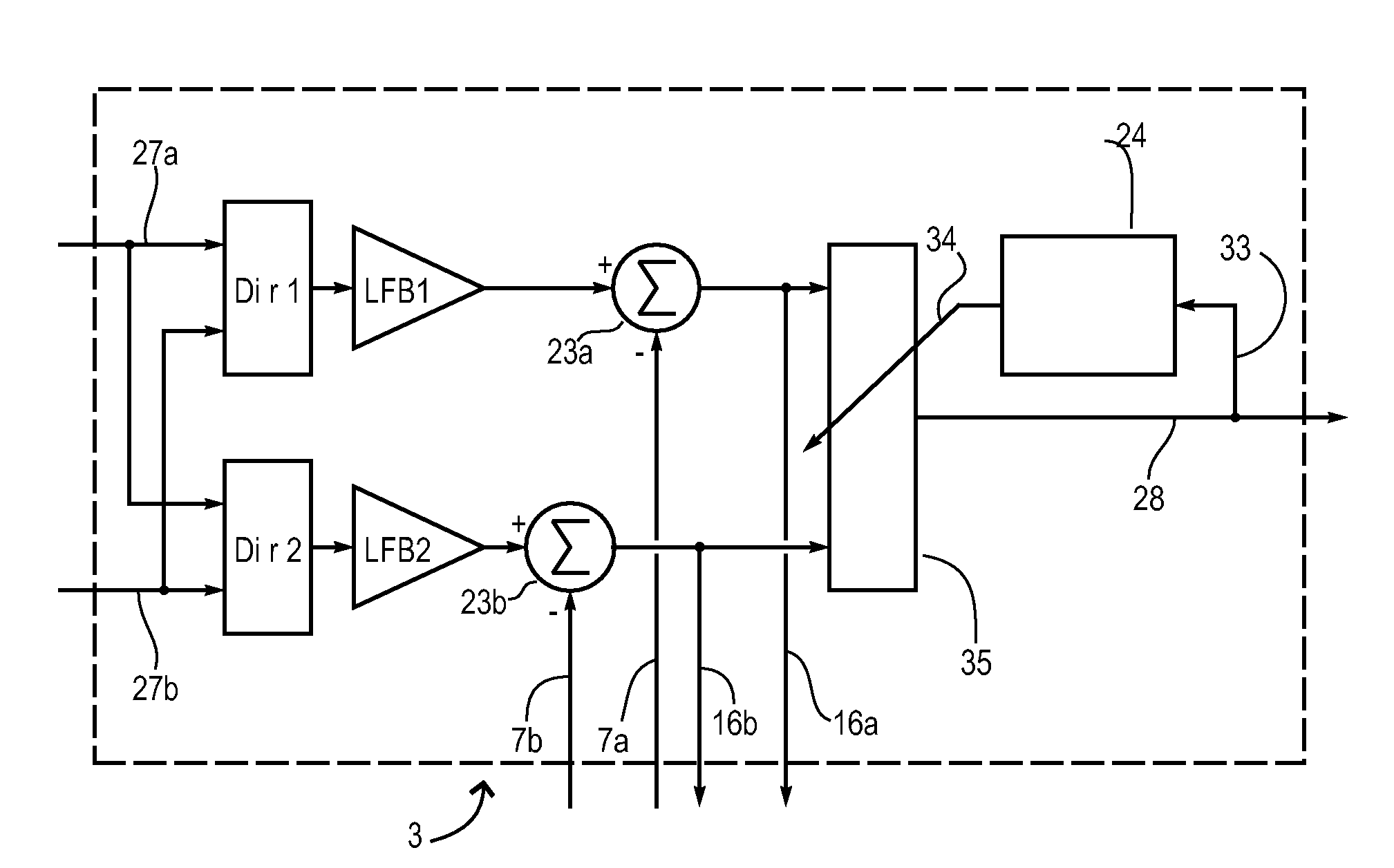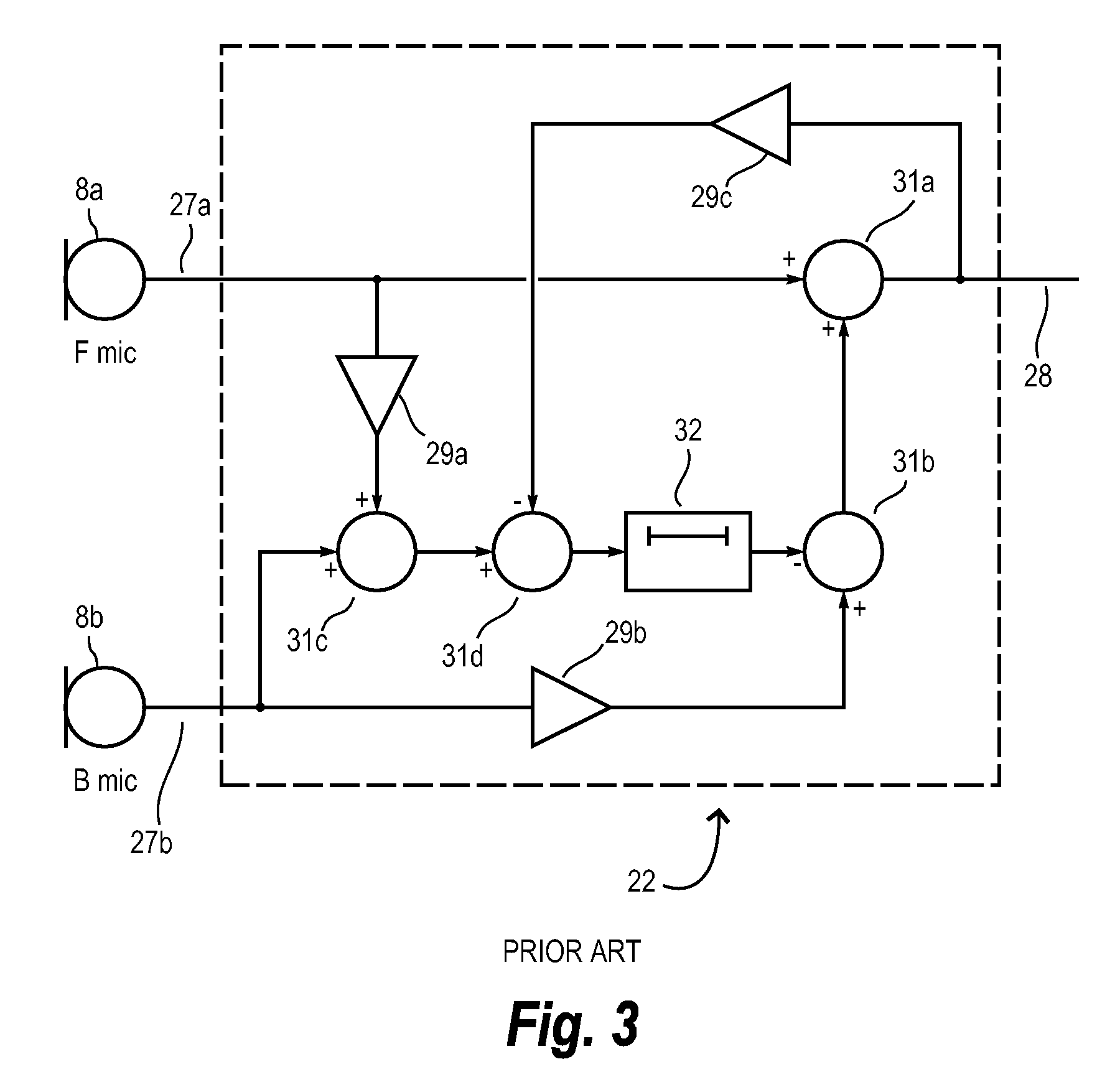Hearing aid and a method of processing input signals in a hearing aid
a technology of input signal and hearing aid, which is applied in the field of hearing aids, can solve the problems of interference with the function of the directional controller, feedback may give rise to signal distortion, and unstable situation, and achieve the effect of improving feedback compensation
- Summary
- Abstract
- Description
- Claims
- Application Information
AI Technical Summary
Benefits of technology
Problems solved by technology
Method used
Image
Examples
Embodiment Construction
[0042]Reference is first made to FIG. 1, which shows an example of a feedback compensating system, known from EP-A-1191814. In this system the feedback path through receiver 5, acoustic feedback path (FB) and microphone 2 is modelled by the feedback signal estimator 6, which outputs a feedback compensating signal 7 based on an estimator input signal. This is obtained by adaptively controlling the controllable filter in the feedback signal estimator 6 such that the correlation between the estimator input signal and the feedback compensated signal 16 is minimized—typically by implementing a minimizing LMS method in the adaptive controller. The generated feedback compensating signal 7 is then combined in adder 23 with the microphone signal 9 to generate the feedback compensated signal 16 which is used as the main signal processor input signal 11. The main signal processor input signal is processed in the main signal processor to form the main processor output signal 13 for the receiver...
PUM
 Login to View More
Login to View More Abstract
Description
Claims
Application Information
 Login to View More
Login to View More - R&D
- Intellectual Property
- Life Sciences
- Materials
- Tech Scout
- Unparalleled Data Quality
- Higher Quality Content
- 60% Fewer Hallucinations
Browse by: Latest US Patents, China's latest patents, Technical Efficacy Thesaurus, Application Domain, Technology Topic, Popular Technical Reports.
© 2025 PatSnap. All rights reserved.Legal|Privacy policy|Modern Slavery Act Transparency Statement|Sitemap|About US| Contact US: help@patsnap.com



